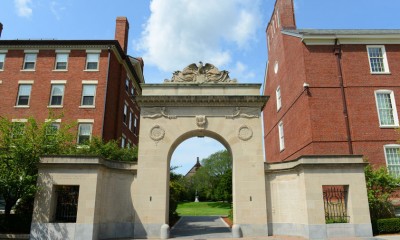Homosexuality had been in existence and widely tolerated since ancient time. Today the right to be gay and being able to have the same rights and privileges of heterosexuals are frowned upon. Gays have been the target of discrimination, which is hypocritical, considering the history of homosexuality.
History of Being Gay and Homosexual Relationships
Maybe it is because the history of being gay and homosexual relationships have been obscured by time, eventually to be buried in the dust and never spoken of again, never discounting that the ever growing gay community will find their voice and demand the right to be heard, demand their right for equality, demand their rights to be treated as a normal human being. According to the United Nations, people have 30 basic human rights, which include freedom and equality for all, non-discrimination, right to life, protection by the law and the right to marriage and family, with men and women having the same rights. While the term “gay” had been used for a long period, it now encompasses a broader spectrum to include lesbians, gays, bisexuals, and transgenders, collectively called LGBTs.
Let us discover the timeline of gay rights, the issues they are faced with, the milestones they have achieved and delve deep into some of the history of gay relationships in countries around the world, including the countries and states were same sex marriage is allowed, where gay relationships are recognized and tolerated and ground-breaking laws enacted by modern and forward-looking countries.
Knowledge and Toleration
- Since 9660 BCE, there have been depictions of homosexual relationships, shown in art etched on Mesolithic rocks in Sicily. Drawings and figurines from the Neolithic and Bronze ages (7000 to 17000 BCE) found in the Mediterranean depicts human figures showing female anatomy on the top half with male anatomy on their lower half. Those found in Neolithic Cyprus and Greece also have dual sexes.
- In the 22nd century BCE, a tale about Egyptian Pharaoh Pepi II Neferkare suggested that he had a homosexual relationship with his general whom he visited in the evenings.
- In 630 BCE, there existed formal relationships between male adult members of Dorian aristocracy and young boys in Crete. The institution was called “paiderasteia.” The noble man was called the “philetor” or befriender, while the boy was called “kleinos” or glorious. There was a ritual “kidnapping” called harpagmos. The boy’s father consents to this. The mentor and mentee would be spending several months in the wilderness, feasting and hunting with other friends. A satisfied boy could then elect to change his title from “kleinos” to “parastates” meaning sidekick and live with his philetor. They were allowed to display their intimacy in public.
- Wall paintings found in the “Etruscan Tomb of the Bulls” that date back to the 6th century showed two bulls watching human couplings, one between a man and a woman while the other was between two men.
- During the 4th century BCE, the “Symposium” of Plato discussed the argument among philosophers such as Phaedrus, Aristophanes and Eryixmachus. The context of the argument was that “the highest form of love is the one between males” because sex with women is basically utilitarian and lustful. In the longest and last dialogue of Plato called “Laws” that was published in 350 BCE, he criticized homosexuality as something lustful. He also added that it was wrong for society because the association would not further the human species and could in fact lead to the citizens becoming irresponsible. The Sacred Band of Thebes was a superior battalion composed of 150 “pederastic” couple. Only the forces of Macedonian King Philip II were able to defeat them in 326 BCE.
- Great military leader Alexander the Great was a recognized bisexual, which was normal in Ancient Greece. His launching of the Hellenistic Age and the conversion of millions to this culture had taught people to positively view homosexual relationships.
- In the second century BCE, the “Lex Scantinia” allowed the imposition of penalties to people that commit “stuprum” or sex crimes against freeborn youngsters. Youngsters even wear a “bulla,” a phallic talisman that indicated that the wearers were off-limits to sexual approaches. However, there is no law that prevented an adult male in Ancient Rome to want and have a relationship with another male, provided that the male was a slave, an “infamis,” (a person excluded from legal protection) or a male prostitute. During this period, Quintus Lutatius Catulus, a Roman consul wrote several Hellenistic poems that point to males being objects of desire.
- Many written documents in the first century BCE show that homosexuality was common and was in practice, from “Carmina” that was written by Catullus, to “Eclogues” by Virgil and the elegies of Tibullus.
- The first century CE (first century AD) saw the legal ceremonies of the marriage of Emperor Nero of Rome to Sporus and Pythagoras. Roman paintings that were destroyed by Mount Vesuvius eruption during this period depicted female to female and male to male erotic art. Beloved Roman Emperor Trajan, like Alexander the Great, was also a homosexual and was fond of young boys. King Abgar VII of Edessa used this weakness to seek pardon from the Emperor. He sent his handsome son to convey his apologies.
- Roman Emperor Hadrian’s favorite lover was a 19-year old boy named Antinous. When he passed away mysteriously the emperor elevated the boy to god status by having statues of the boy created and displayed around the empire.
- Roman Emperor Egalabalus started his reign on 218 CE and married young athlete, Zoticus in an overly generous ceremony welcomed by the public.















Facebook
Twitter
Pinterest
Google+
LinkedIn
Email